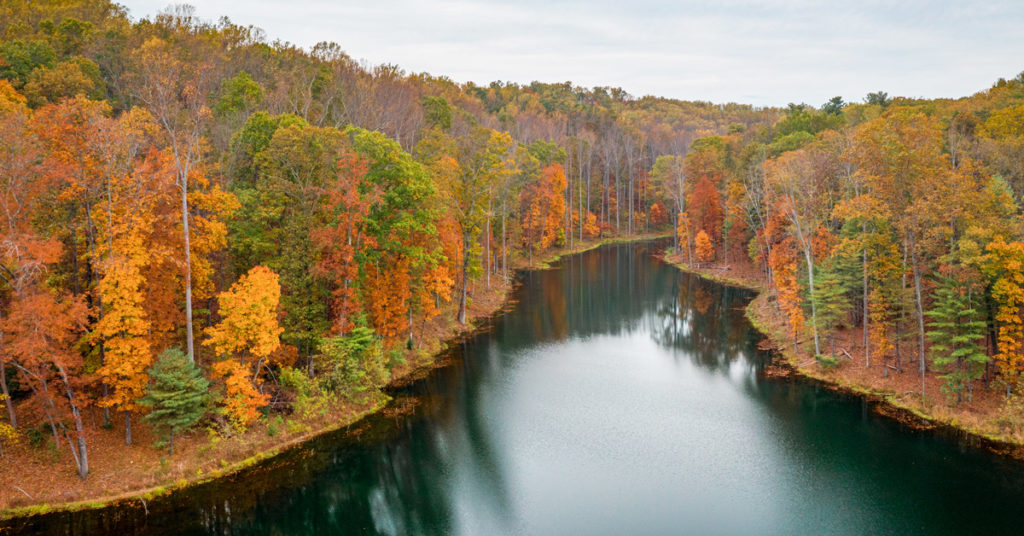
People donate easements because of their love of the land and their desire to see it protected forever. Their actions also foster land and resource stewardship that benefits all of us with: clean water, productive farm and forestland, thriving natural habitats, climate resiliency, open spaces and beautiful views.
Read more about the many public benefits of a conservation easement:
Preserving Wildlife Habitat
Strategic conservation efforts help maintain biological diversity, protect rare ecological communities, and retain blocks of habitat for hunting, fishing, and wildlife viewing. Ninety percent of all VOF easements contain land identified as an ecological “core”. In the Shenandoah Valley, targeted outreach resulted in conservation of 1000+ acres of wildlife corridor linking Shenandoah National Park and George Washington National Forest.
Conserving Working Farms and Forests
Proactive conservation ensures that the basic inputs for farming and forestry — an adequate supply of land and water — will be available in the future. Conservation easements within the Piedmont are protecting over 147,000 acres of farm soils designated as important by the state and federal government and 159,500 acres of forests. These features, along with the 1,300 miles of protected land along streams and rivers, aid in the preservation of a healthy watershed for years to come.
Ensuring Clean and Plentiful Water
Healthy watersheds require forests, vegetation and open ground to filter precipitation and store moisture. In areas where 10% or more of the surface is impervious, water quality is likely to be impaired. Over one third of the Goose Creek watershed (over 80,000 acres) is protected through conservation easements. Eastern Loudoun County and the City of Fairfax rely on Goose Creek for their public water supply.
Addressing Climate Change
Land conservation is a key to combating climate change by helping to maintain trees and other natural cover that sequesters carbon and keeps communities cool. In addition, land conservation goes hand-in-hand with promotion of sustainable land use planning and smart growth outcomes that reduce emissions by reducing vehicle miles traveled (by reducing both the number of daily driving trips and the length of those trips).
Continuing Virginia’s Historic Legacy
People come to experience the places that tell the story of our nation’s history. Domestic tourists spend over $16 billion in Virginia annually. Tourism accounts for nearly $700 million in state tax receipts and $435 million in revenue to localities every year. There are currently 22,100 acres of battlefields permanently protected in Virginia, with more than one fifth of core battlefields located in the Shenandoah Valley Battlefields National Historic District. Near Albemarle, there are over 41,500 acres protected in historic districts near Monticello and Montpelier; contributing to a total of 87,250 acres of historic districts protected throughout the Piedmont.
Expanding Recreational Opportunities
Support for land conservation ensures that Virginia’s residents and visitors — now and in the future — can experience the Commonwealth’s exceptional natural beauty. Of the 336,000 protected by easements in the Virginia’s northern Piedmont, more than 100,000 acres are visible from the Appalachian Trail, and 148,000 acres visible from Virginia Scenic Roads. The Virginia Land Conservation Fund helped create or expand six parks or publicly accessible sites, last year alone.
Restoring the Chesapeake Bay
Land conservation in the Chesapeake Bay watershed is a key element of the effort to restore the bay and a Keystone Commitment in the Chesapeake 2000 Agreement. State agencies have identified conservation easements as the most likely means of protecting the remaining 239,000 acres needed to fulfill the Chesapeake Bay 2000 Agreement. Over 307,500 acres of the Chesapeake Bay watershed are permanently protected through conservation easements.
